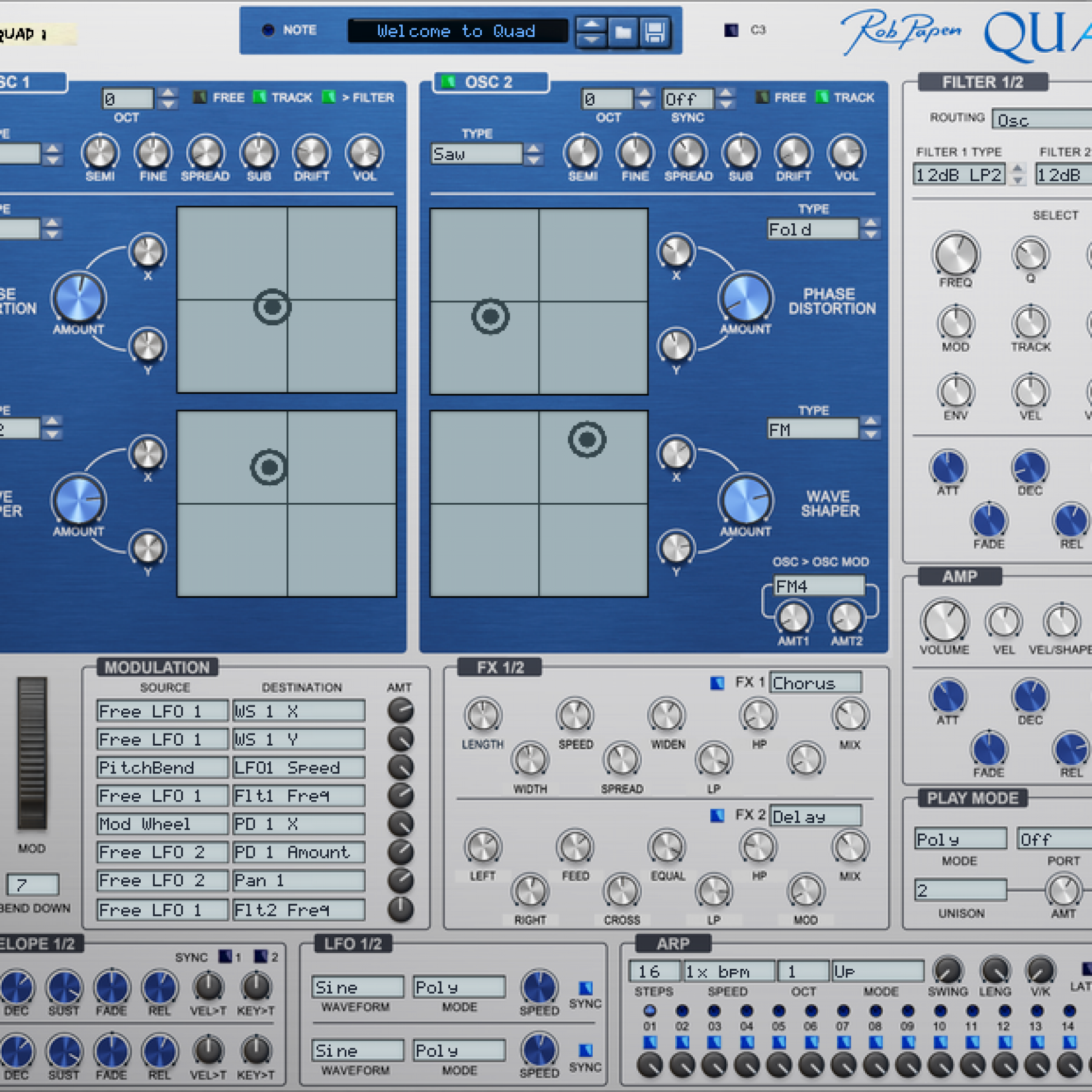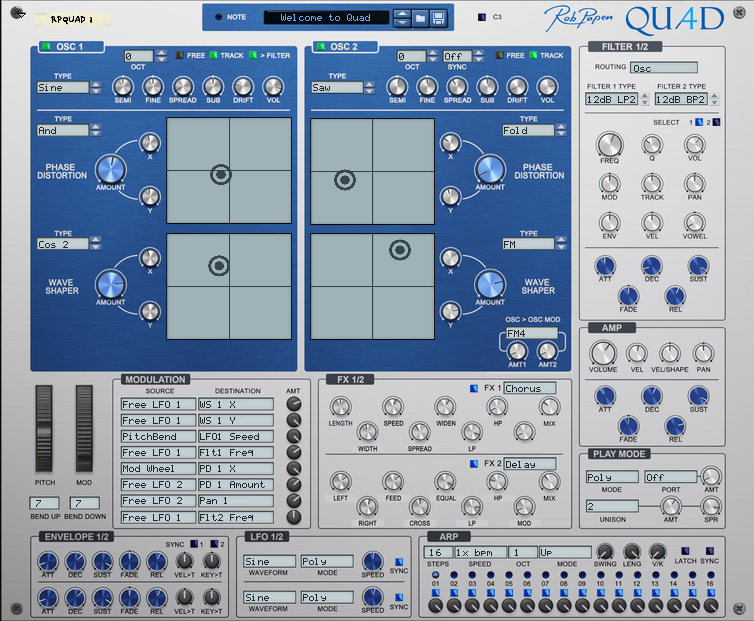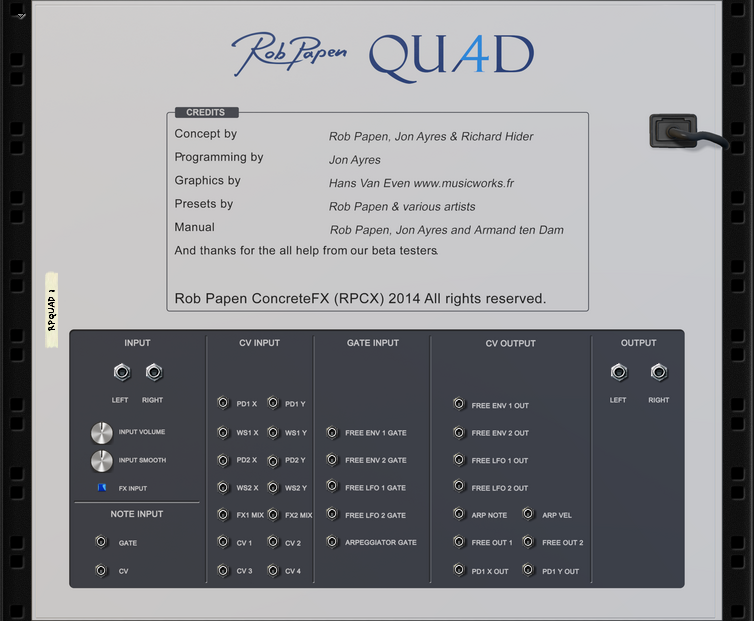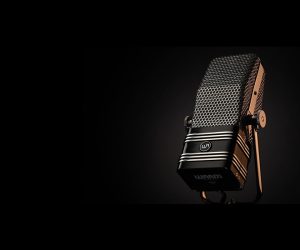
QUAD RE-SYNTH FOR REASON

Rob Papen Soundware has announced the availability of QUAD, its first Rack Extension (RE) synthesiser built from the ground up for Propellerhead Reason.
When Swedish music software maker Propellerhead first unveiled its fully expandable, freely-routable, RE synth for Reason, Rob Papen, (company founder and namesake) was delighted, calling it among other things, “a brilliant concept”. Papen almost immediately began porting his virtual instruments for the Reason-RE, starting with Predator-RE, followed by the SubBoomBass-RE, PR-Verb, PR-Distort, and PunchBD-RE.
Singing Reason’s praises further, Papen went on to say, “What we face as a developer is having to have a PC version and a Mac version, and if you run them in your regular host, you can crash your host. That’s a real big battle. People, if they use Reason, learn that things are connected. It’s cross-platform; everything works. It’s a major leap forward for Reason, and productions coming out of [it] will sound totally different now, it’s open.” With Quad, the company wanted to make a wholly unique synth, with (what seems to be) a massive sonic pallette. They did this by building it completely from the ground up.
“[It’s] still ‘subtractive synthesis’ like you know from Predator and so on. But the oscillator part has some interesting new features that vastly expands the sound options and makes Quad very different from any other regular ‘subtractive synthesizer’,” reasons Papen. Put simply, Quad has two oscillators (OSC 1 and OSC 2) at its sonic core, each endowed with a seemingly simple selection of classic waveforms (Sine, Triangle, Saw, White Noise, and Pink Noise), together with a ‘Spread’ function (adding multiple oscillators with slightly differing pitches to the main oscillators, to fatten up the sound), and a ‘Sub’ oscillator tuned one octave below with two selectable waveforms (Sinus and Square).
Those oscillators can then be combined with cross modulation functions, generating a range of harmonics. Papen said, “This is arranged inside OSC 1, where we also have several interesting modulation types. Also, OSC 1 can be shut down for going into the filter, so it can be exclusively used as a modulator for OSC 2.” The new tools are controlled via the four XY pads on the main screen, not only giving the synth its name, but also giving both OSC 1 & 2 new capabilities, such as phase distortion and wave shaper. Papen continues: “For each we have several distortion or wave-shaping types. With the XY dials or XY field you can change this dynamic. The very cool thing is that with minimal effort you can quickly create a new sound and preset.”
As Papen is also a sound designer he made sure the new synth comes stocked with his own custom presets, which you can replace them with your own.
There’s also a modulation matrix; two effects processors (FX 1/2) that can be automated within the matrix or via the ‘external back-panel’ CV; LFO 1/2, an Envelope 1/2 that can be tempo-synced and an AMP section for controlling the volume contour. Combined with 28 filter types via two analogue-modelled filters (Filter 1/2) with various routings, as well as an arpeggiator (ARP) with several playback modes.
Finally Papen said (with quite the grin, we imagine), “It’s a big synth!”

Pricing and Availability
Quad is available now as a direct download from the Propellerhead Shop (link) for US$119.00 (aprox. AU$135) from the Propellerhead Shop. The company also has a try-before-you-buy service, if you’d prefer to test a few REs.
Australian Distributor: Electric Factory www.elfa.com.au [email protected] (03) 9474 1000
For more detailed info, check: www.robpapen.com
FEATURES
General:
- 16 voice virtual synthesizer for Propellerhead Reason/Essentials 7.1/2.1 or higher
- Available only at Propellerhead RE shop
Oscillators:
- 2 oscillators with classic subtractive waveforms
- Spread for multiple oscillator sound inside each oscillator
- Sub-oscillator with two waveforms: sinus or square
- Phase Distortion with X/Y control and 21 distortion types in each oscillator
- Whave Shaper with X/Y control and 21 shape types in each oscillator
- Oscillator 1 can be shut down from going into the filter, for modulation purposes
- Free oscillator running on/off function
- Keyboard tracking on/off function
- Oscillator-2 has ‘OSC > OSC MOD’ option with 16 types of modulation
Filters
- Two filters with routing options: serial, parallel and oscillator
Oscillator mode means that oscillator-1 goes into filter-1 and oscillator-2 into filter-2 - Pan control inside each filter
- Velocity, Envelope, Modulation Wheel and Keyboard-tracking control in each filter.
- Envelope with Attack, Decay, Sustain, Sustain-fade and Release in each filter
AMP
- Volume control
- Volume velocity control
- Keyboard velocity response curve control with in centre dial position: linear response
- Volume envelope with Attack, Decay, Sustain, Sustain-fade and Release
Free Envelope 1/2
- Can be accessed by using the modulation matrix
- Two envelopes with Attack, Decay, Sustain, Sustain-fade and Release
- Tempo sync option
- Velocity to time response controller
- Keyboard to time response controller
Free LFO 1/2
- Can be accesssed by using the modulation matrix
- Sine, Triangle, Saw Up, Saw Down, Square and S&H (random) waveforms
- Speed control and tempo sync option
- Poly, Free and Mono play modes
Modulation matrix
- 8 modulation slots
- Slots amounts are available as modulation target
- 39 modulation sources including the X/Y pads and 4x CV
- 119 modulation targets including the FX parameters, Free out-1 and Free out-2
Play modes
- Polyphonic (16voice), Mono, Legato, Arp and Unison play mode
- Portamento modes: Constant Time, Constant Rate, Hold Time (Legato playing respond) and Hold Rate (Legato playing response)
- Unison modes 2,3,4 and 6 with detuning amount and stereo spread amount
Arpeggiator
- 16 step arpeggiator
- Steps can be turned on/off
- Velocity control per step
- Velocity mix control to mix between ‘Arp velocity step setting’ and ‘Keyboard input’
- Swing control
- Length control for overall length of each step
- Speed control from 1/4x BPM to 4x BPM
- Latch option
- Different play modes including ‘chord’ mode
Back panel
- Input into the filter or direct into the FX
- Note/Gate inputs
- CV inputs to X/Y pads, FX1/2 mix and 4x Free (CV1-4)
- Gate inputs to Free Envelopes, Free LFO’s and Arpeggiator
- CV outputs of the Free Envelopes, Free LFO’s, Arp note, Arp velocity, PD X and Y out, Free out 1 and 2
Excerpts from Press Release
















RESPONSES